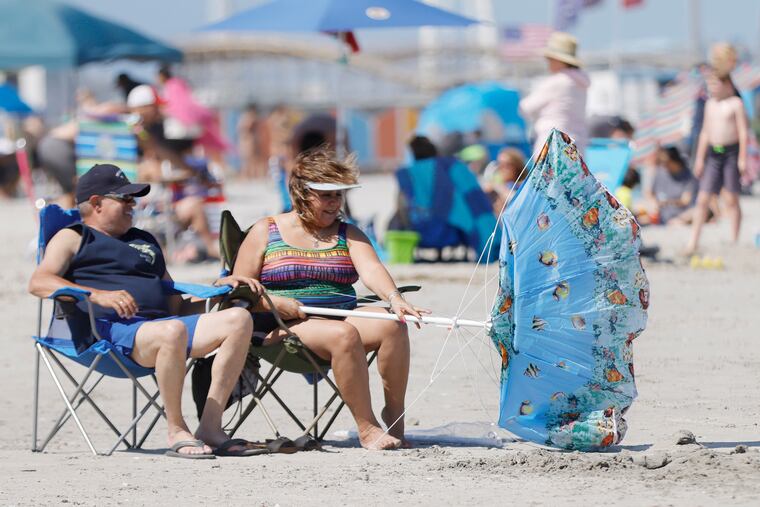The Jersey Shore ocean temperature readings are back, just in time for winter
In a reversal, NOAA voided the high-temperature records, and also declared that the low readings during the "upwelling" events were invalid.

New Jersey’s only near-shore ocean temperature sensor evidently came down with an incurable case of seasickness during the summer, according to its NOAA keepers, and the trouble started sooner than the agency previously reported.
More than a month before it began recording historically high readings — up to 84.7 degrees — that were more appropriate to the tropics, it became clear that something was wrong with this particular “high-precision thermistor sensor,” an official with the National Oceanic and Atmospheric Administration said Tuesday.
Ocean temperatures always vary, but usually no more than 1 to 4 degrees during a 24-hour period. However, at 4:56 a.m. on July 19, the NOAA sensor, located several feet deep in the waters off Steel Pier, in Atlantic City, showed a drop of 15 degrees in just four hours.
At that point, the agency’s spokesperson said, NOAA’s monitoring system immediately “stopped data assimilation.”
Thus not only were the high readings thrown out, but the ones in the mid-50s during what appeared to have been part of an “upwelling” cooling event in late July into August also were invalid, the official said.
» READ MORE: Those ocean temperatures were indeed too high NOAA says
That was a reversal: Last month, a spokesperson for NOAA’s National Ocean Service had said those readings were not in question.
NOAA’s “Tides and Currents” site kept reporting the temperatures until Aug. 24, and satellite data posted by the Rutgers Center for Ocean Observing Leadership did show a vigorous cooling of near-shore waters coinciding with what the NOAA gauge was displaying.
In any event, officials determined that the sensor was on the fritz and irreparable, and divers replaced it on Sept. 29, said NOAA oceanographer Todd Ehret.
On average these sensors have an “operational life” of 15 to 20 years, the NOAA spokesperson said, but it’s standard procedure to replace them every 10 years or so. This replacement was on the early side, given that it was installed in October 2014.
It’s not just for bathers
While people going to the beach have an interest in knowing the water temperature, it also has important scientific applications, NOAA says. Among other things it is another piece of data used in weather-forecasting computer models.
» READ MORE: Computer models tend to change their minds. Observation is key to their accuracy
Model accuracy is dependent on the quality of observations at any given point, and the oceans cover about 70% of the Earth’s surface.
Those Atlantic City readings again are available. If you’re planning to take a dip this week, as of Tuesday afternoon, the water temperatures were in the mid-60s.